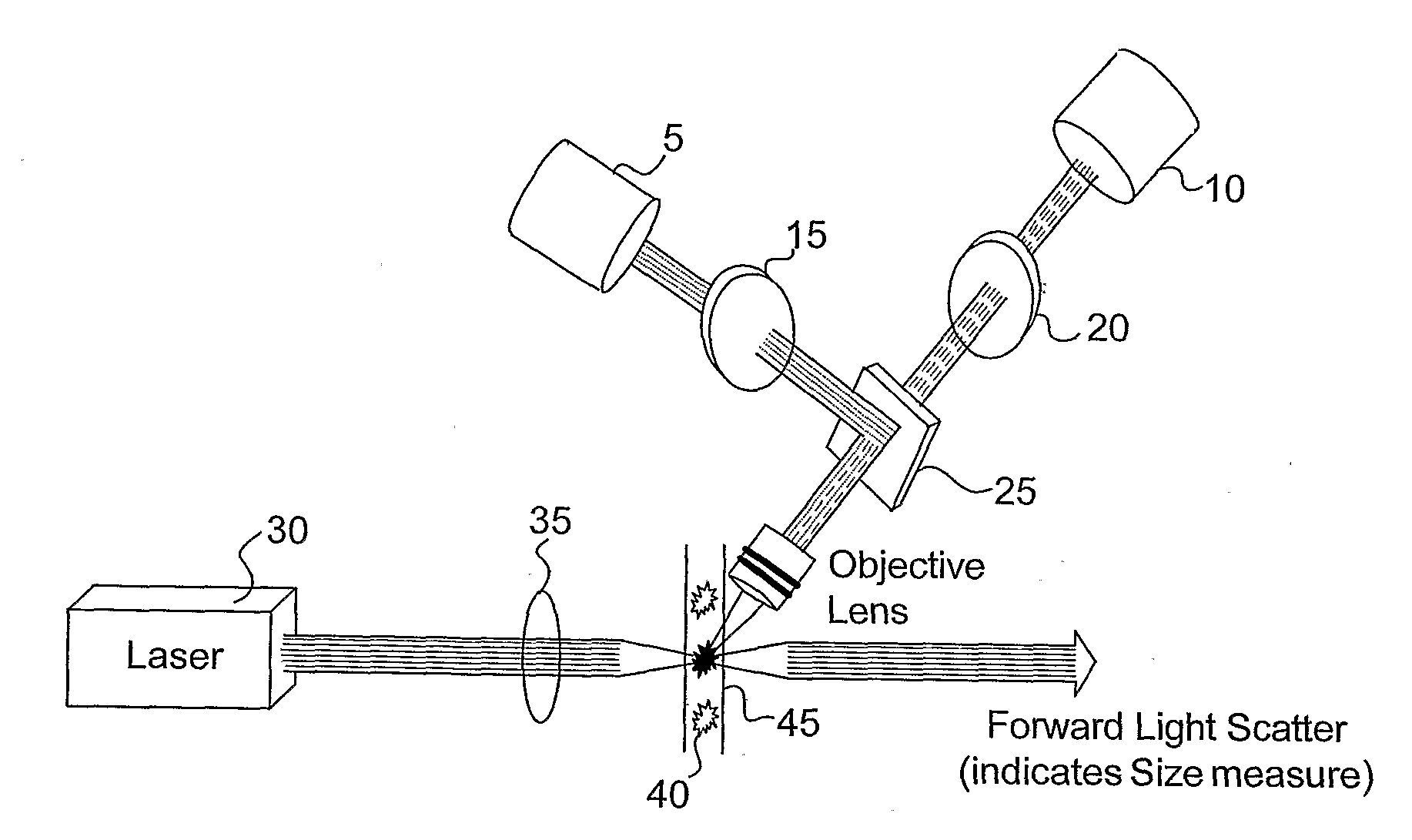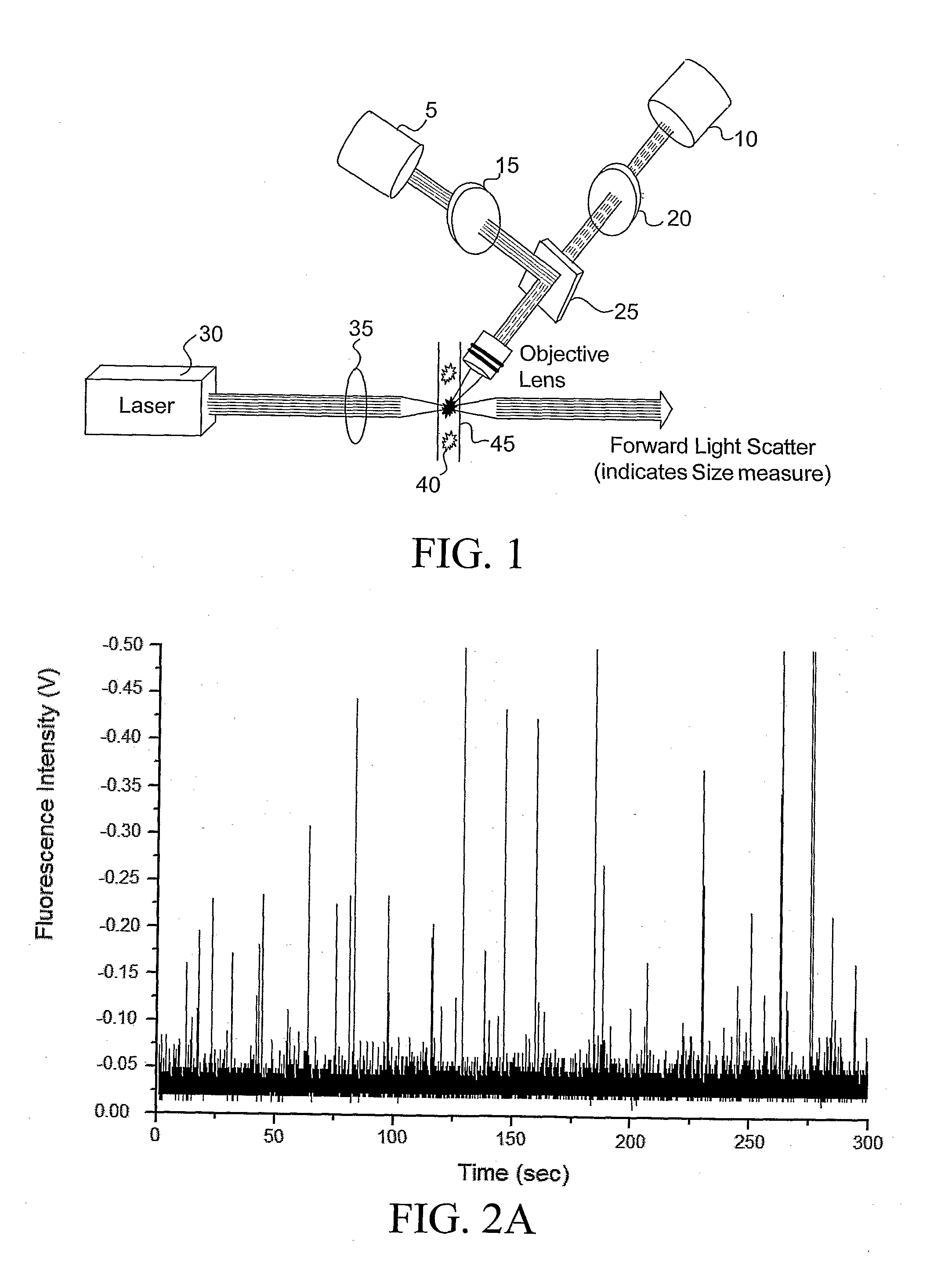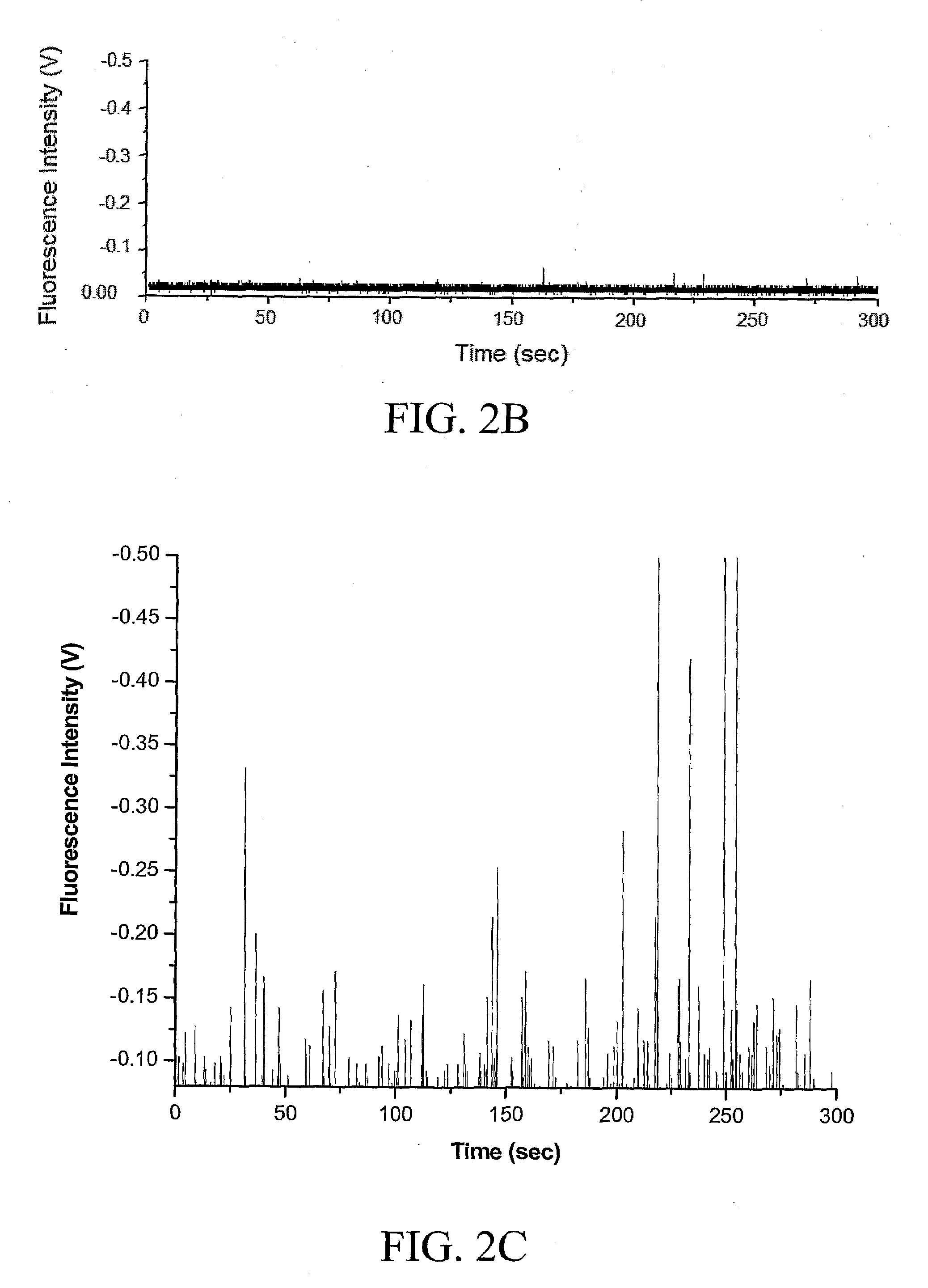Portable Materials and Methods for Ultrasensitive Detection of Pathogen and Bioparticles
a bioparticle and ultrasensitive technology, applied in the field of portable materials and methods for ultrasensitive detection of pathogens and bioparticles, can solve the problems of significant death, laborious and time-consuming methods, and time constraints and ease of on-site analysis are major limitations, and achieve rapid and highly sensitive and specific detection.
- Summary
- Abstract
- Description
- Claims
- Application Information
AI Technical Summary
Benefits of technology
Problems solved by technology
Method used
Image
Examples
example 1
Synthesis of Dye-Doped Silica Nanoparticles
[0047]FIG. 6 is a diagram showing a reverse microemulsion procedure for nanoparticle synthesis. In one embodiment, using a reverse microemulsion method (also known as water-in-oil microemulsion), generally uniformly sized 60±4 nm spherical RuBpy-doped silica NPs are synthesized and characterized with respect to uniformity and luminescence properties. With a water-to-surfactant molar ratio (W0) of 10, a reverse microemulsion is prepared by mixing about 7.5 mL cyclohexane, about 1.8 mL n-hexanol, about 1.77 mL triton x-100, about 80 μl of 0.01 M RuBpy, and about 400 μl water, followed by continuous stirring for about 20 minutes at room temperature. The size of the nanoparticles can be manipulated, as needed, by changing the water-to-surfactant molar ratio.
[0048]After adding about 100 μL of TEOS and about 60 μl of NH4OH solution, which initiates the polymerization of Si(OH)4 generated from the hydrolysis of TEOS, the reaction proceeds with con...
example 2
Immobilization of the Monoclonal Antibodies onto the Silica Nanoparticle Surface
[0049]The surface of the nanoparticle serves as a universal biocompatible and versatile substrate for the immobilization of biomolecules. In one embodiment of the present invention, after a thorough water wash, the silica surfaces of the RuBpy-doped carboxylated nanoparticles are activated, using about 100 mg / ml of 1-ethyl-3-3(3-dimethylaminopropyl) carbodiimide hydrochloride (EDC) and about 5 ml of 100 mg / ml N-hydroxy-succinimide (NHS) in a Z-morpholinoethanesulfonic acid (Mes) buffer (pH 6.8), for about 25 minutes at room temperature with continuous stirring. Water-washed particles are dispersed in about 10 ml of 0.1M PBS (pH 7.3) and reacted with monoclonal antibodies (mAbs) against E. coli O157: H7 for about 3 hours at room temperature with continuous stirring. To covalently immobilize the monoclonal antibodies onto the NP surface, about 5 ml of 0.1 mg / ml nanoparticles is reacted with about 2 ml of 5...
example 3
Detection of Bacteria
[0051]A 500 μL bacterial sample, which contains 25 bacteria based on plate-counting results, is dispersed into about 500 μL of 0.1 mg / ml of antibody conjugated NPs in a 0.1 M PBS buffer (pH 7.3) for about ten minutes. To remove the free antibody conjugated NPs that did not bind to the bacteria, the samples are centrifuged at about 14,000 rpm for about 30 seconds, and then the supernatant is removed. The samples are washed again to remove all unbound antibody conjugated NPs, and about 1.0 ml of PBS buffer is added to the samples. Samples are pumped through the capillary using a 1 ml syringe and a mechanical microliter syringe pump. This allows for a steady flow of sample through the channel at controllable various flow rates, including, for example, sample flow rates ranging from about 1 μL / hr to about 2 mL / hr. In another embodiment, control samples are obtained using the same experimental procedures but without the addition of bacteria.
PUM
 Login to View More
Login to View More Abstract
Description
Claims
Application Information
 Login to View More
Login to View More - R&D
- Intellectual Property
- Life Sciences
- Materials
- Tech Scout
- Unparalleled Data Quality
- Higher Quality Content
- 60% Fewer Hallucinations
Browse by: Latest US Patents, China's latest patents, Technical Efficacy Thesaurus, Application Domain, Technology Topic, Popular Technical Reports.
© 2025 PatSnap. All rights reserved.Legal|Privacy policy|Modern Slavery Act Transparency Statement|Sitemap|About US| Contact US: help@patsnap.com



